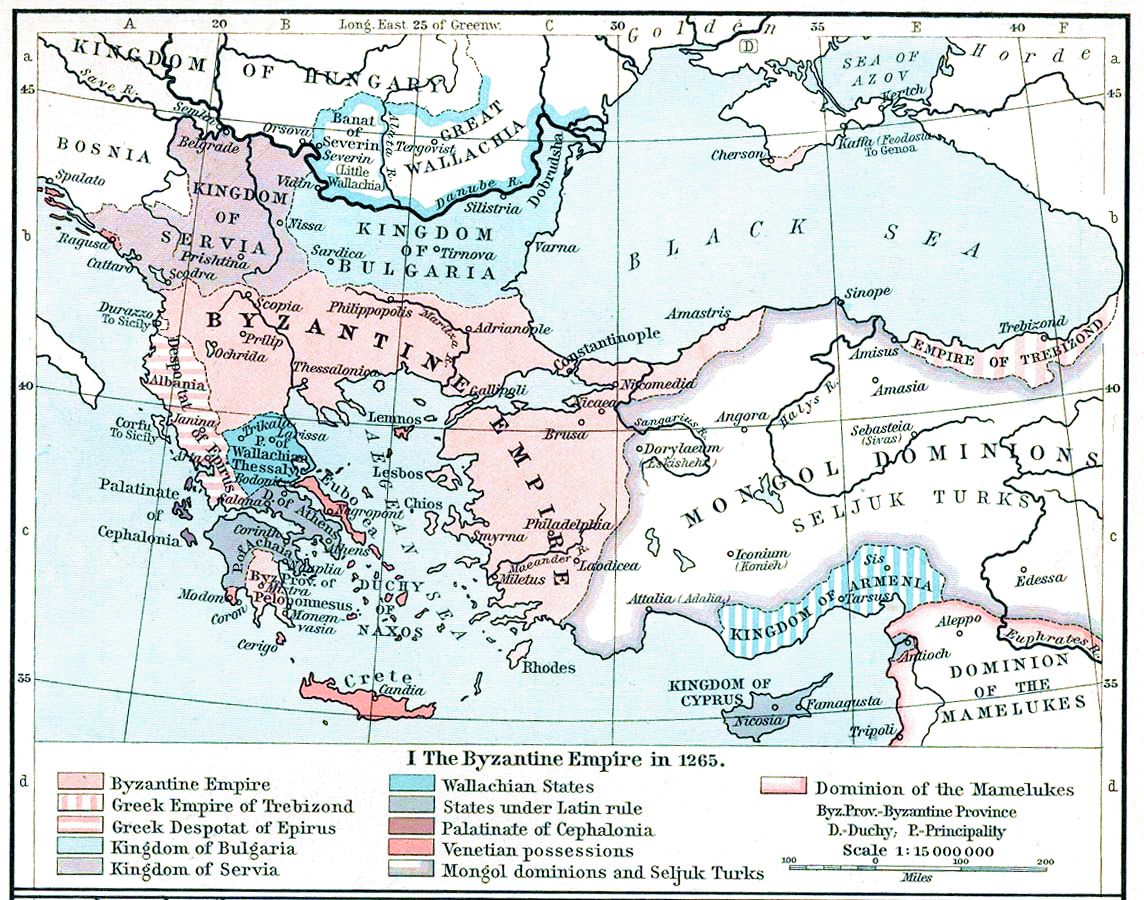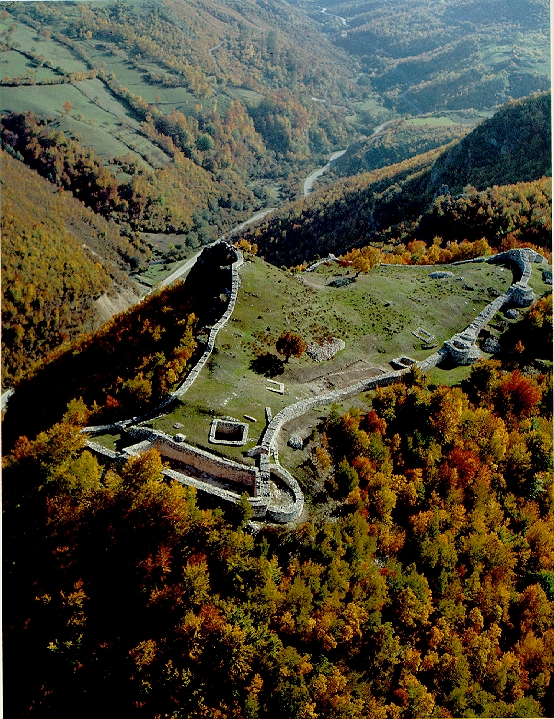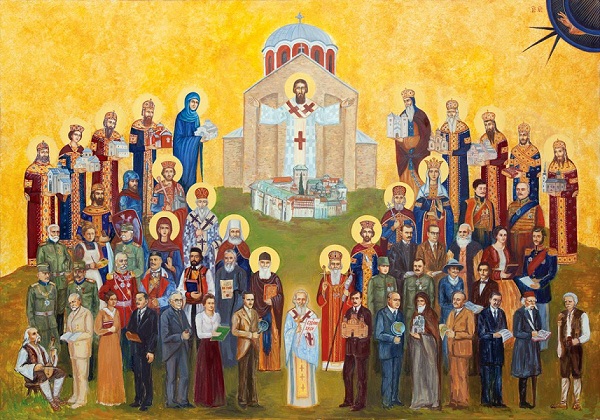|
Stephen Uroš II Milutin Of Serbia
Stephen (honorific), Stefan Uroš II Milutin ( sr-Cyrl, Стефан Урош II Милутин, Stefan Uroš II Milutin; 1253 – 29 October 1321), known as List of Serbian saints, Saint King, was the List of Serbian monarchs, King of Kingdom of Serbia (medieval), Serbia between 1282–1321, a member of the Nemanjić dynasty. He was one of the most powerful rulers of Serbia in the Middle Ages and one of the most prominent European monarchs of his time. Milutin is credited with strongly resisting the efforts of Byzantine Emperor Michael VIII Palaiologos to impose Roman Catholicism on the Balkans after the Second Council of Lyon, Union of Lyons in 1274. During his reign, Serbian economic power grew rapidly, mostly due to the development of mining. He founded Novo Brdo Fortress, Novo Brdo, which became an internationally important silver mining site. As most of the Nemanjić monarchs, he was proclaimed a saint by the Serbian Orthodox Church with a feast day on October 30. Early ... [...More Info...] [...Related Items...] OR: [Wikipedia] [Google] [Baidu] |
Saint
In Christianity, Christian belief, a saint is a person who is recognized as having an exceptional degree of sanctification in Christianity, holiness, imitation of God, likeness, or closeness to God in Christianity, God. However, the use of the term ''saint'' depends on the context and Christian denomination, denomination. In Anglican Communion, Anglican, Oriental Orthodox, and Lutheranism, Lutheran doctrine, all of their faithful deceased in Heaven are considered to be saints, but a selected few are considered worthy of greater honor or emulation. Official Ecclesiastical polity, ecclesiastical recognition, and veneration, is conferred on some denominational saints through the process of canonization in the Catholic Church or glorification in the Eastern Orthodox Church after their approval. In many Protestant denominations, and following from Pauline usage, ''saint'' refers broadly to any holy Christian, without special recognition or selection. While the English word ''saint'' ... [...More Info...] [...Related Items...] OR: [Wikipedia] [Google] [Baidu] |
Saint Nedelya Church
Saint Nedelya Cathedral (), is an Eastern Orthodox cathedral in Sofia, the capital of Bulgaria, a cathedral of the Sofia bishopric of the Bulgarian Patriarchate. The temple of Sveta Nedelya dates back to the 10th century, being a cathedral of the city from the 18th century. The sacred building has suffered destruction through the ages and has been reconstructed many times. The present building of the temple is among the landmarks of Sofia. It was designed by the famous Bulgarian architectural team Vasilyov- Tsolov. The relics of the Serbian king Stefan Uroš II Milutin are kept in the church. History The history of the cathedral's earliest years is to a large extent unknown. It was probably built in the 10th century and had stone foundations and an otherwise wooden construction, remaining wooden until the middle of the 19th century, unlike most other churches in the city. A German traveller by the name of Stephan Gerlach visited Sofia in 1578 and mentioned the church. Around ... [...More Info...] [...Related Items...] OR: [Wikipedia] [Google] [Baidu] |
Saint
In Christianity, Christian belief, a saint is a person who is recognized as having an exceptional degree of sanctification in Christianity, holiness, imitation of God, likeness, or closeness to God in Christianity, God. However, the use of the term ''saint'' depends on the context and Christian denomination, denomination. In Anglican Communion, Anglican, Oriental Orthodox, and Lutheranism, Lutheran doctrine, all of their faithful deceased in Heaven are considered to be saints, but a selected few are considered worthy of greater honor or emulation. Official Ecclesiastical polity, ecclesiastical recognition, and veneration, is conferred on some denominational saints through the process of canonization in the Catholic Church or glorification in the Eastern Orthodox Church after their approval. In many Protestant denominations, and following from Pauline usage, ''saint'' refers broadly to any holy Christian, without special recognition or selection. While the English word ''saint'' ... [...More Info...] [...Related Items...] OR: [Wikipedia] [Google] [Baidu] |
Silver Mining
Silver mining is the extraction of silver by mining. Silver is a precious metal and holds high economic value. Because silver is often found in intimate combination with other metals, its extraction requires the use of complex technologies. In 2008, approximately 25,900 metric tons of silver were consumed worldwide, most of which came from mining. Silver mining has a variety of effects on the environment, humans, and animals. Silver sources Silver-bearing ore typically contains very little silver, with much higher percentages of copper and lead. Specific minerals include argentite (Ag2 S), chlorargyrite ("horn silver," Ag Cl), polybasite (Ag, Cu)16Sb2S11), and proustite (Ag3AsS3). Silver mainly occurs as a contaminant in chalcopyrite and galena, important ores of copper and lead, respectively.Kassianidou, V. 2003. Early Extraction of Silver from Complex Polymetallic Ores, in Craddock, P.T. and Lang, J (eds) Mining and Metal production through the Ages. London, British ... [...More Info...] [...Related Items...] OR: [Wikipedia] [Google] [Baidu] |
Novo Brdo Fortress
Novo Brdo Fortress (; sr-Cyrl-Latn, Тврђава Ново Брдо, Tvrđava Novo Brdo) is a medieval Serbian fortress in Kosovo. Its ruins are located near the town of Novo Brdo, about east of Pristina. The fortress was built in the late 13th century by king Stephen Uroš II Milutin of Serbia to protect gold, silver, iron and lead mines which were abundant throughout the area. Novo Brdo was famous for its silver. Together with the castles of Prizren (castle), Prizren, to the southwest, and Prilepac (castle), Prilepac, to the southeast, which guard access roads to the fortress, Novo Brdo helped form a defensive complex overlooking the lucrative mining operations. Novo Brdo was at its height during the Serbian Despotate (1402–1459), when it was the most important mining area and second most important town in Serbia. A significant number of Saxon miners, Albanian Catholics and a large Republic of Ragusa, Ragusan merchant colony lived within the town, which was ruled by a ''v ... [...More Info...] [...Related Items...] OR: [Wikipedia] [Google] [Baidu] |
Second Council Of Lyon
The Second Council of Lyon was the fourteenth ecumenical council of the Roman Catholic Church, convoked on 31 March 1272 and convened in Lyon, Kingdom of Arles (in modern France), in 1274. Pope Gregory X presided over the council, called to act on a pledge by Byzantine emperor Michael VIII to reunite the Eastern church with the West.Wetterau, Bruce. World history. New York: Henry Holt and company. 1994 The council was attended by about 300 bishops, 60 abbots and more than a thousand prelates or their procurators, among whom were the representatives of the universities. Due to the great number of attendees, those who had come to Lyon without being specifically summoned were given "leave to depart with the blessing of God" and of the Pope. Among others who attended the council were James I of Aragon, the ambassador of the Emperor Michael VIII Palaiologos with members of the Greek clergy and the ambassadors of Abaqa Khan of the Ilkhanate. Thomas Aquinas had been summoned to ... [...More Info...] [...Related Items...] OR: [Wikipedia] [Google] [Baidu] |
Roman Catholicism
The Catholic Church (), also known as the Roman Catholic Church, is the List of Christian denominations by number of members, largest Christian church, with 1.27 to 1.41 billion baptized Catholics Catholic Church by country, worldwide as of 2025. It is among the world's oldest and largest international institutions and has played a prominent role in the history and development of Western civilization.Gerald O'Collins, O'Collins, p. v (preface). The church consists of 24 Catholic particular churches and liturgical rites#Churches, ''sui iuris'' (autonomous) churches, including the Latin Church and 23 Eastern Catholic Churches, which comprise almost 3,500 dioceses and Eparchy, eparchies List of Catholic dioceses (structured view), around the world, each overseen by one or more Bishops in the Catholic Church, bishops. The pope, who is the bishop of Rome, is the Papal supremacy, chief pastor of the church. The core beliefs of Catholicism are found in the Nicene Creed. The ... [...More Info...] [...Related Items...] OR: [Wikipedia] [Google] [Baidu] |
Michael VIII Palaiologos
Michael VIII Palaiologos or Palaeologus (; 1224 – 11 December 1282) reigned as Byzantine emperor from 1261 until his death in 1282, and previously as the co-emperor of the Empire of Nicaea from 1259 to 1261. Michael VIII was the founder of the Palaiologos, Palaiologan dynasty that would rule the Byzantine Empire until the Fall of Constantinople in 1453. He Reconquest of Constantinople, recovered Constantinople from the Latin Empire in 1261 and transformed the Empire of Nicaea into a Byzantine Empire under the Palaiologos dynasty, restored Byzantine Empire. His reign saw considerable recovery of Byzantine power, including the enlargement of the Byzantine army and Byzantine navy, navy. It also included the reconstruction of the city of Constantinople, and the increase of its population. His re-establishment of the University of Constantinople contributed to the Palaeologan Renaissance, a cultural flowering between the 13th and 15th centuries. It was also at this time that the fo ... [...More Info...] [...Related Items...] OR: [Wikipedia] [Google] [Baidu] |
Byzantine
The Byzantine Empire, also known as the Eastern Roman Empire, was the continuation of the Roman Empire centred on Constantinople during late antiquity and the Middle Ages. Having survived the events that caused the fall of the Western Roman Empire in the 5th centuryAD, it endured until the fall of Constantinople to the Ottoman Empire in 1453. The term 'Byzantine Empire' was coined only after its demise; its citizens used the term 'Roman Empire' and called themselves 'Romans'. During the early centuries of the Roman Empire, the western provinces were Latinised, but the eastern parts kept their Hellenistic culture. Constantine I () legalised Christianity and moved the capital to Constantinople. Theodosius I () made Christianity the state religion and Greek gradually replaced Latin for official use. The empire adopted a defensive strategy and, throughout its remaining history, experienced recurring cycles of decline and recovery. It reached its greatest extent un ... [...More Info...] [...Related Items...] OR: [Wikipedia] [Google] [Baidu] |
Serbia In The Middle Ages
The medieval period in the history of Serbia began in the 6th century with the Slavic migrations to Southeastern Europe, and lasted until the Ottoman Serbia, Ottoman conquest of Serbian lands in the second half of the 15th century. The period is also extended to 1537, when Pavle Bakić, the last titular Despot of Serbia in Hungarian exile, fell in the Battle of Gorjani. At the time of settling, Serbs were already transitioning from a tribal community into a feudal society. The first Serbian state with established political identity was founded by prince Vlastimir in the mid-9th century. It was followed by other Serbian proto states, unstable due to the constant clashes with the First Bulgarian Empire, Bulgarians, Principality of Hungary, Hungarians and Byzantine Empire, Byzantines, and by the conflict between Catholic Church, Rome and Ecumenical Patriarchate of Constantinople, Constantinople regarding the Christianization of Serbs, Christianization with the Byzantines getting th ... [...More Info...] [...Related Items...] OR: [Wikipedia] [Google] [Baidu] |
Kingdom Of Serbia (medieval)
The Kingdom of Serbia was a country located in the Balkans which was created when the ruler of the Principality of Serbia, Milan I, was proclaimed king in 1882. Since 1817, the Principality was ruled by the Obrenović dynasty (replaced by the Karađorđević dynasty for a short time). The Principality, under the suzerainty of the Ottoman Empire, '' de facto'' achieved full independence when the very last Ottoman troops left Belgrade in 1867. The Congress of Berlin in 1878 recognized the formal independence of the Principality of Serbia, and in its composition Nišava, Pirot, Toplica and Vranje districts entered the South part of Serbia. In 1882, Serbia was elevated to the status of a kingdom, maintaining a foreign policy friendly to Austria-Hungary. Between 1912 and 1913, Serbia greatly enlarged its territory through engagement in the First and Second Balkan Wars – Sandžak-Raška, Kosovo Vilayet and Vardar Macedonia were annexed. At the end of World War I in 19 ... [...More Info...] [...Related Items...] OR: [Wikipedia] [Google] [Baidu] |
List Of Serbian Saints
This is a list of saints of the Serbian Orthodox Church. List The Serbian Orthodox Church (SOC) venerates all Eastern Orthodox saints, regardless of ethnic background (e.g. John the Baptist, Maximus the Greek and Nicholas II of Russia). However, this list specifically includes saints who were either of Serbian descent and/or members of the SOC (or one of its historical predecessors, e.g. Serbian Patriarchate of Peć). Listed below are only those officially recognised by the SOC. Folk saints not yet canonised by the Church (e.g. Patriarch Pavle, Milica Rakić and Thaddeus of Vitovnica) are not included. The list below provides each saint's name (typically the one given at the saint's canonisation) in English, Serbian Cyrillic and Latin, year of death, feast day (on both the Julian calendar and Revised Julian calendar), saint titles and notes on the saint's notable actions, other names and relations with other saints. An icon or photograph is also provided if available. ... [...More Info...] [...Related Items...] OR: [Wikipedia] [Google] [Baidu] |






